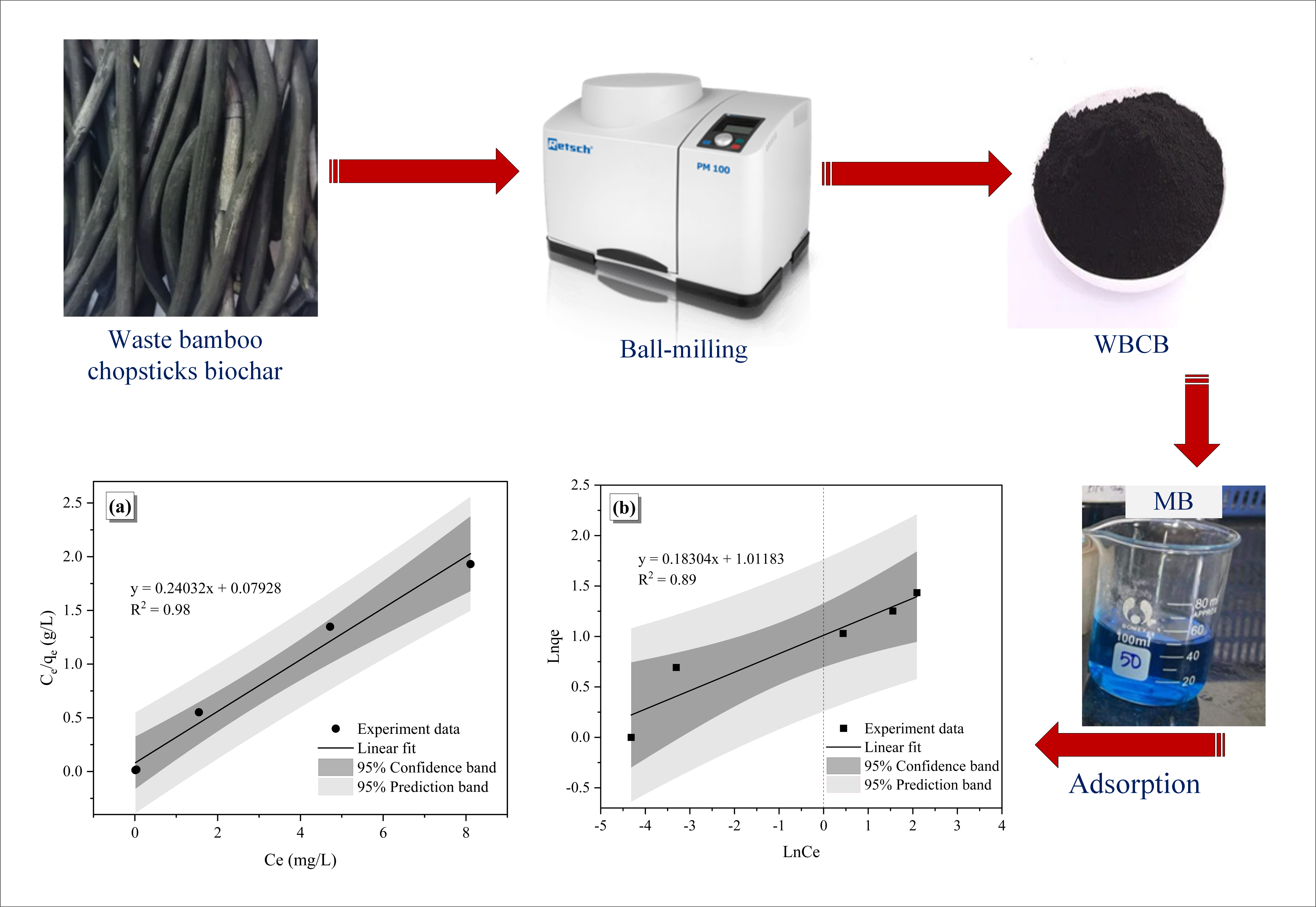Ball-Milled Biochar from Waste Bamboo Chopsticks: A Potential Adsorbent for Methylene Blue Removal
Main Article Content
Abstract
Waste bamboo chopsticks encounter limited recycling. Several treatment procedures necessitate sophisticated technologies and intricate processes that need more practicality for local-scale production, leading to substantial challenges in effectively repurposing waste from disposable bamboo chopsticks. In this research, waste bamboo chopsticks were used as raw materials for the production of ball-milled biochar (BM-WBCB). FTIR, SEM, and BET were among the numerous analytical methods used to describe the BM-WBCB. The outcomes showed that the surface was made up of hollow, porous structures. In addition, the pHpzc value of the biochar was 8.7, and it had a BET-specific surface area (273.11 m2 g-1). The study also investigated ball-milled biochar's adsorption capacity and efficiency in removing MB from aqueous solutions. Batch adsorption experiments were conducted under various experimental conditions, such as initial dye concentration, contact time, pH, and adsorbent dose, to evaluate the adsorption kinetics, equilibrium, and thermodynamics of the adsorption process. The results showed the optimal adsorption conditions, such as pH solution, MB concentration, dose of BM-WBCB, and contact time at 10, 30 mg L-1, 0.3 mg, and 60 min, respectively. With a maximal adsorption capacity of 4.2 mg g-1, monolayer adsorption was shown by the fit of the adsorption isotherm data to the Langmuir isotherm model. It was demonstrated that the kinetics of biochar adsorption may be accurately modeled using the linear pseudo-second-order kinetic model.
Article Details

This work is licensed under a Creative Commons Attribution-NonCommercial 4.0 International License.
Published articles are under the copyright of the Applied Environmental Research effective when the article is accepted for publication thus granting Applied Environmental Research all rights for the work so that both parties may be protected from the consequences of unauthorized use. Partially or totally publication of an article elsewhere is possible only after the consent from the editors.

